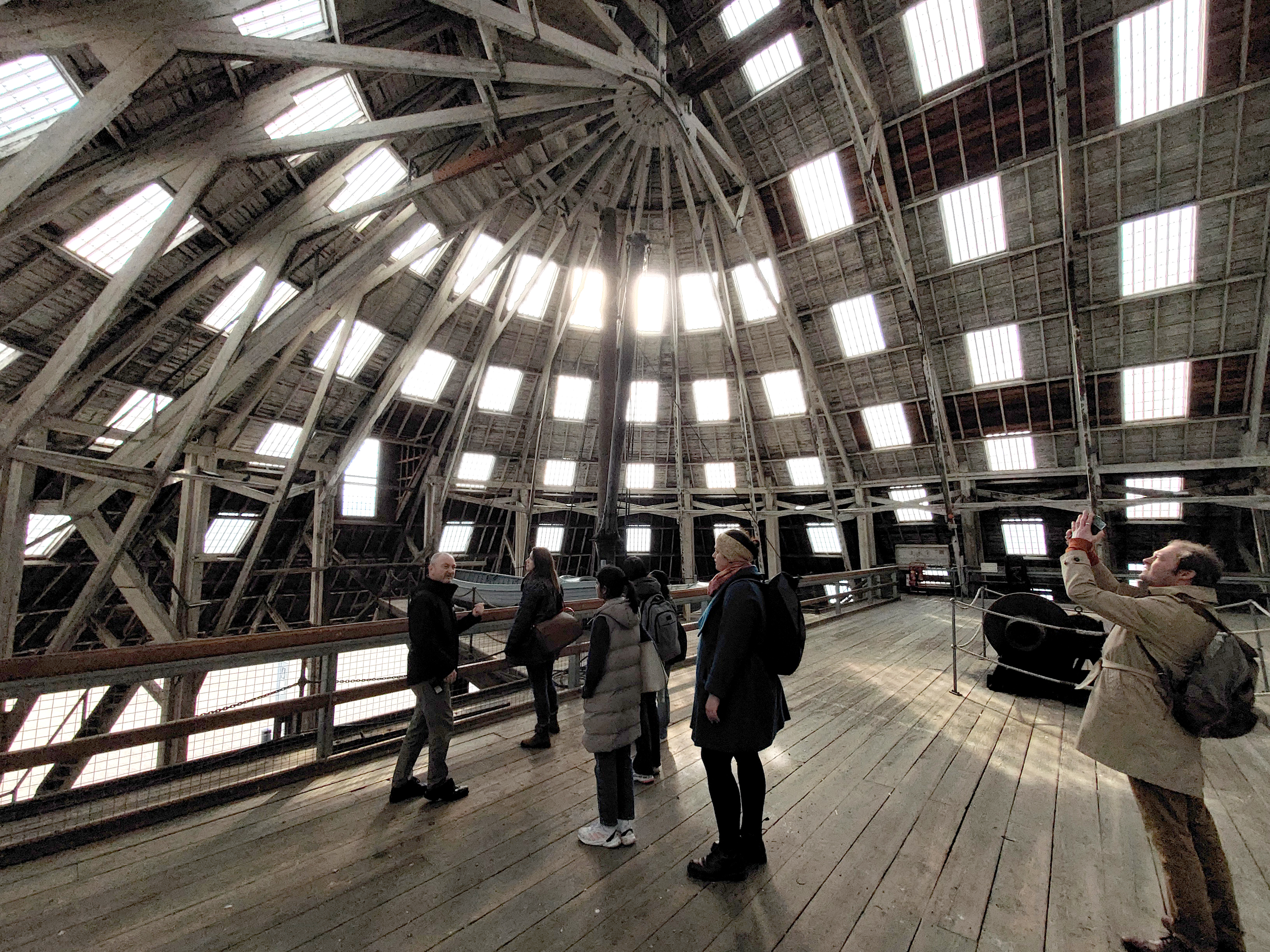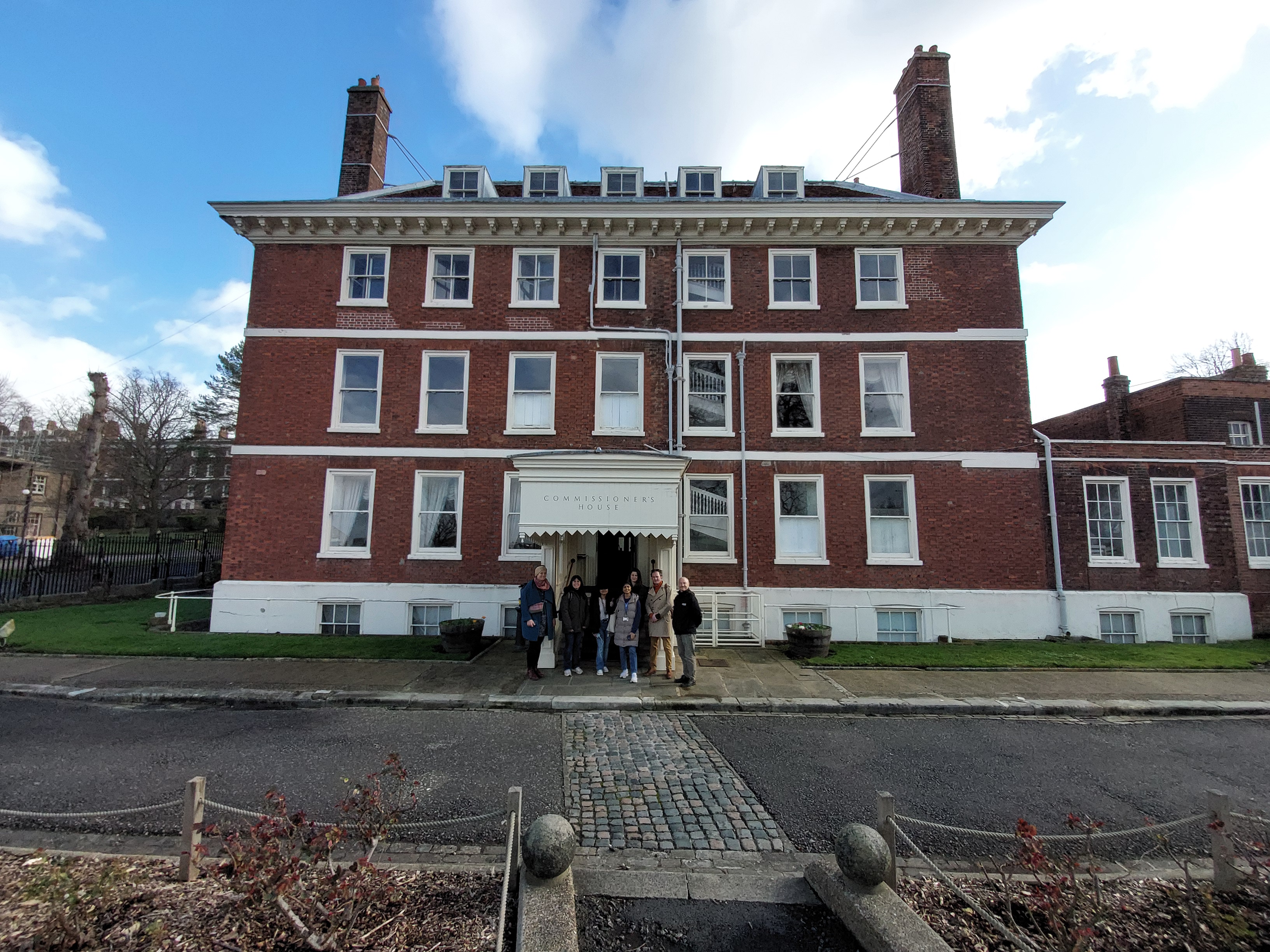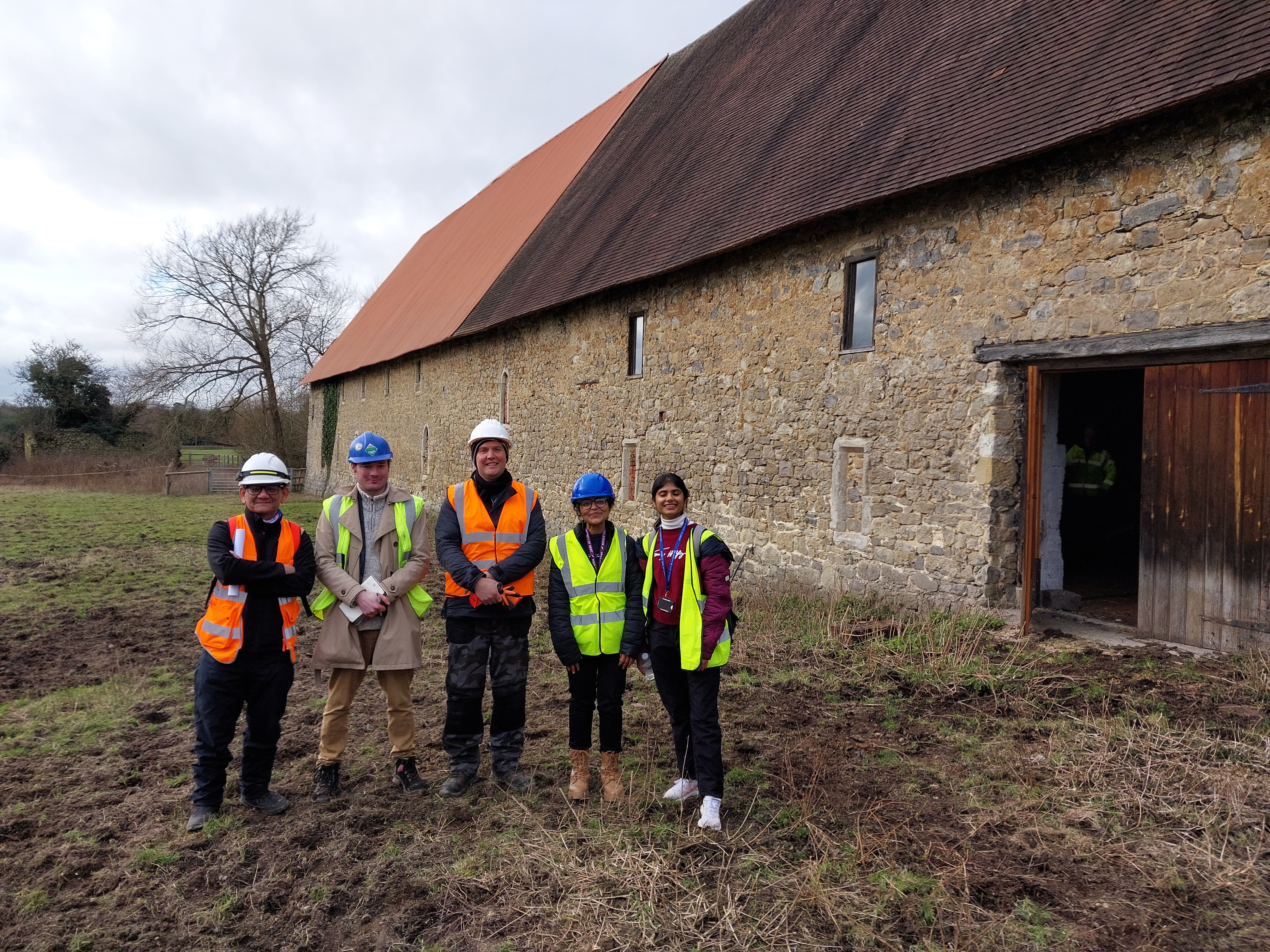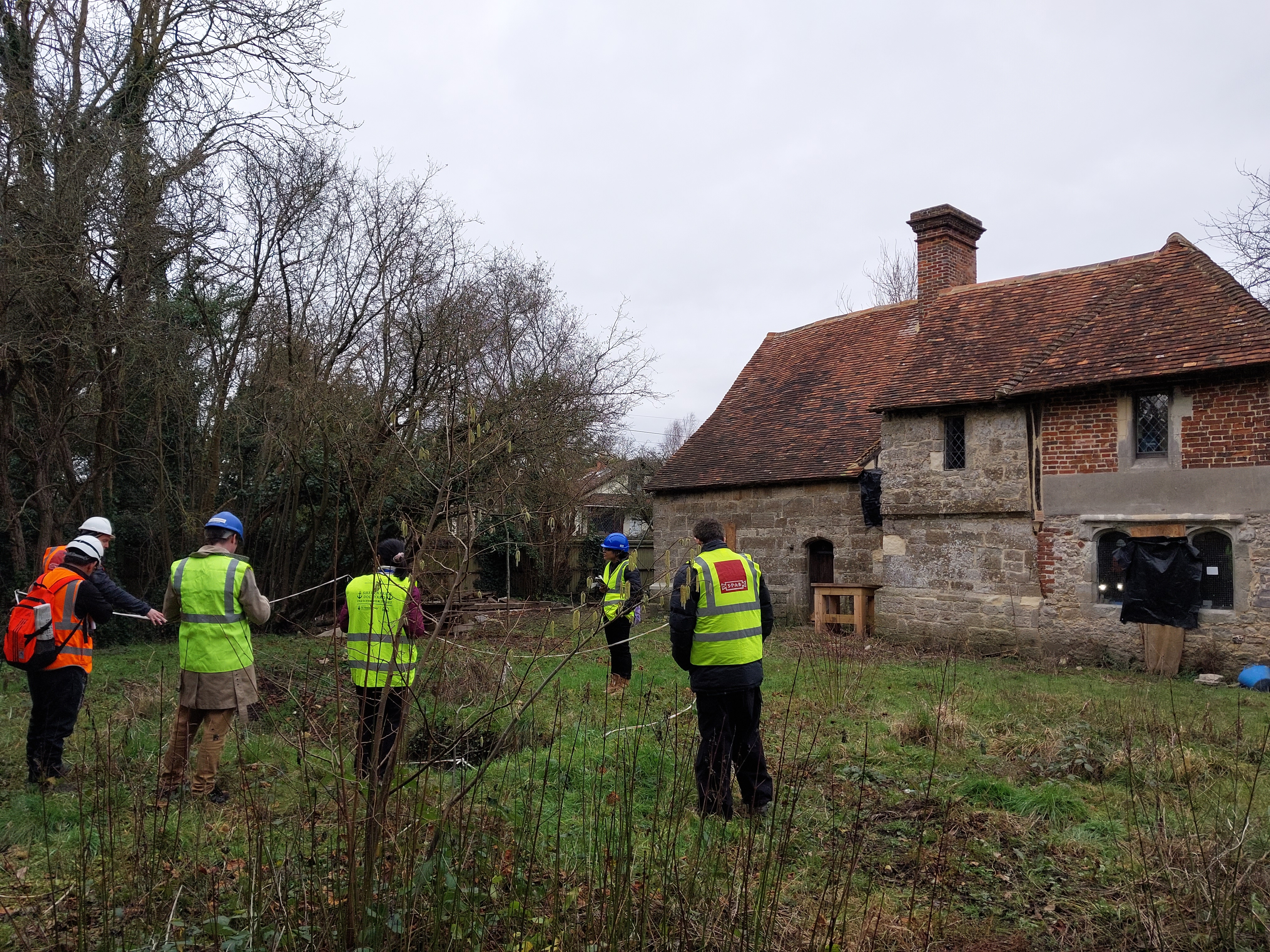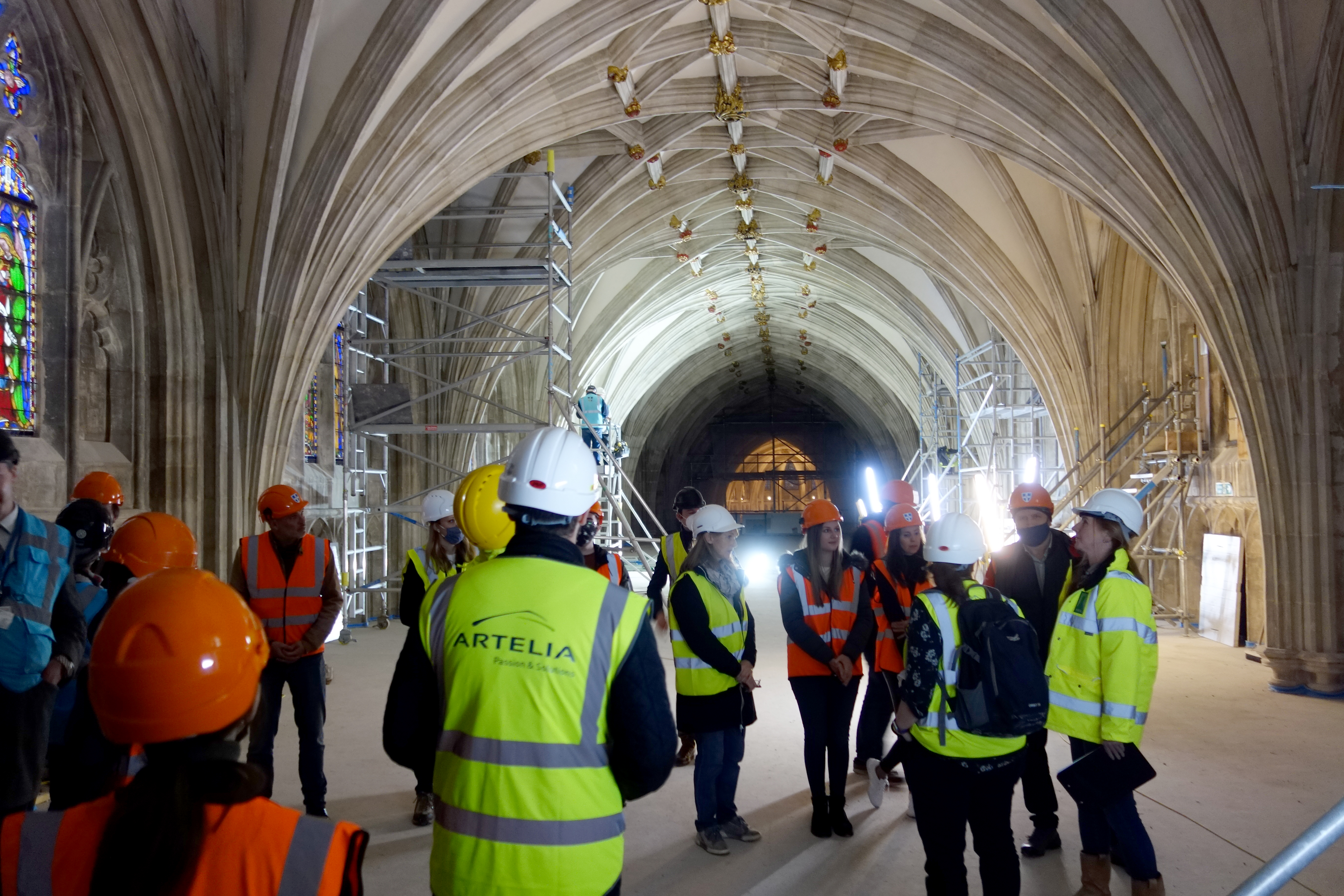During the Autumn Term, our students visited a number of Historic Sites. Rebecca Lilley and Diane Harvey-White report on the site visit in Rochester.
It was on a bright day in mid-October that I and my fellow Architectural Conservation students arrived at Chatham House in Rochester. This Grade II* listed mansion dates from the early 18th century and has a brewery complex behind, which stretches to the banks of the River Medway. For many years and until the early 2000s the site was used as a furniture and upholstery department of the well-known Featherstone’s Department stores. In their heyday Featherstone’s had shops in Rochester, Sittingbourne, Sheerness, Gravesend, Maidstone and Canterbury, and visiting the long, nearly straight, High Street I could picture how key this institution must have been to the character and popularity of the High Street. Sadly, like so many of our department stores of old, Featherstone’s is no more. However Chris Featherstone still owns No. 351 Chatham House in Rochester. We were greeted by Chris’s daughter Sheila, who is currently managing the conservation and refurbishment of No. 351. She spoke about her plans to restore the building so that it may, once again, be accessible to the public. The plans will be multi-phased, as different areas of the site will require different treatments to bring them back into full occupation.
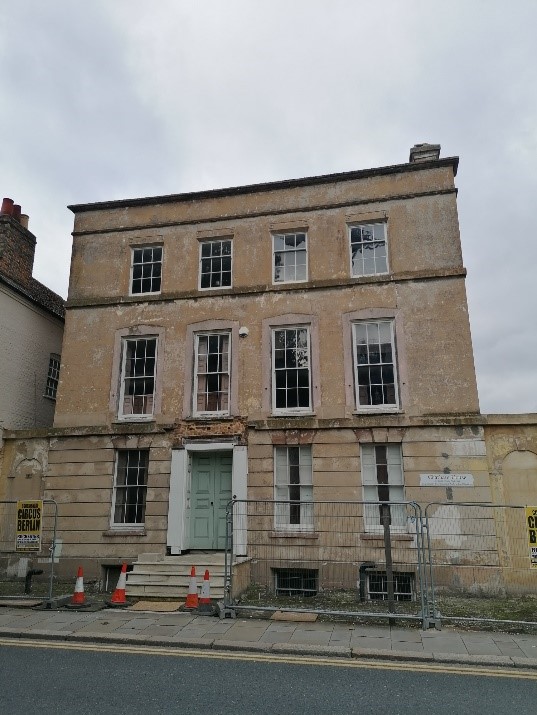
Figure 1 Chatham House, front elevation
From my view as a new student in conservation, the site was a goldmine of historic features, and although the buildings here have been vacant for some time, it is clear that with good planning, sound advice and a great deal of financial backing, the enthusiasm which Sheila, her family and the team on the ground show will, in time, result in a remarkable transformation from a vacant store to a veritable asset to the town. Whilst the mansion is in relatively good condition, and retains many of its original features – as is evident in its Grade II* status – it is the Brewery building that will require the most work to give it a long-term viable future. It was clear that the Brewery had evolved organically over several generations. Its interior is a maze of rooms which vary from a vast 3-storey covered yard to small store rooms and passageways on split levels. The building is a hotchpotch of different materials, some showing signs of former use, perhaps in other buildings or maybe in shipping. Roofs have cleverly been adapted over time as new rooms have been created in the nooks and crannies between the main spaces. Original features such as high-level gantries, sliding doors and winches are numerous and will aid in the retention of the aura of the brewery when it is repurposed in due course.
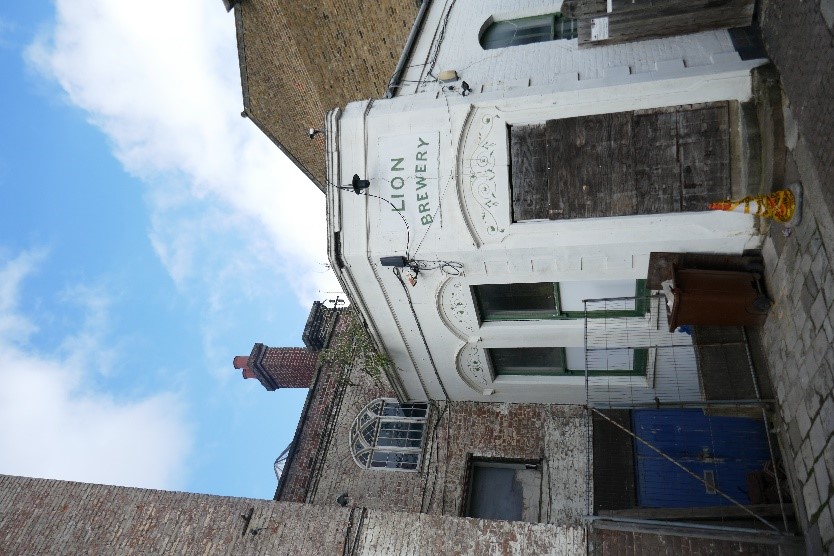
Figure 2 Side elevation, showing the Lion Brewery entrance
Enough of the original charm of the mansion and its brewery have been retained under the custodianship of the Featherstones and this shall aid their endeavours to retain, conserve, and repurpose the building so that it may be enjoyed for many generation to come. Our visit, which I could so easily write several more pages on, was an excellent example for the topic of our Masters and I wish Sheila and the project team all the very best for their endeavours there. It won’t be easy, but it will indeed be worth it.
Rebecca Lilley
To some people looking at a building with visible signs of decay is an uncomfortable experience; to a conservationist it is the beginning of a journey that will reveal the secrets of a building and end with that building saved for future generations. On a recent field trip to Rochester High Street, a recipient of a High Street Heritage Action Zone grant, we were able to see for ourselves one such gem – Chatham House. This magnificent town house shows obvious signs of deterioration: the front portico is missing, the façade is delaminating, there are plants growing out of the parapet. These things mask the significance of a building that contributed much to the High Street when times were good and it is this significance that informs the need for protection.

Discovering why a building becomes vacant sometimes tells the story of the wider area: the downturn in the economy, or the change in the usage of buildings in that area and this is true of Chatham House, which was used for many decades as a department store. Changes to retail shopping and the rise of the Internet, contributes to the story, for High Streets up and down the country have been victims of the same circumstance.

This mesmerising building offers the potential for events, retail or hospitality. The ancillary buildings that once housed a brewery – the house was built by a brewer as a display of his wealth – create a much larger, flexible use space to the rear and this whole site links back to the river and Chatham Docks, paving the way for a meaningful contribution to the regeneration of the area as a whole. Seeing a building in this condition offered insight to the valuable contribution important local buildings can provide for future development.
Diane Harvey-White





